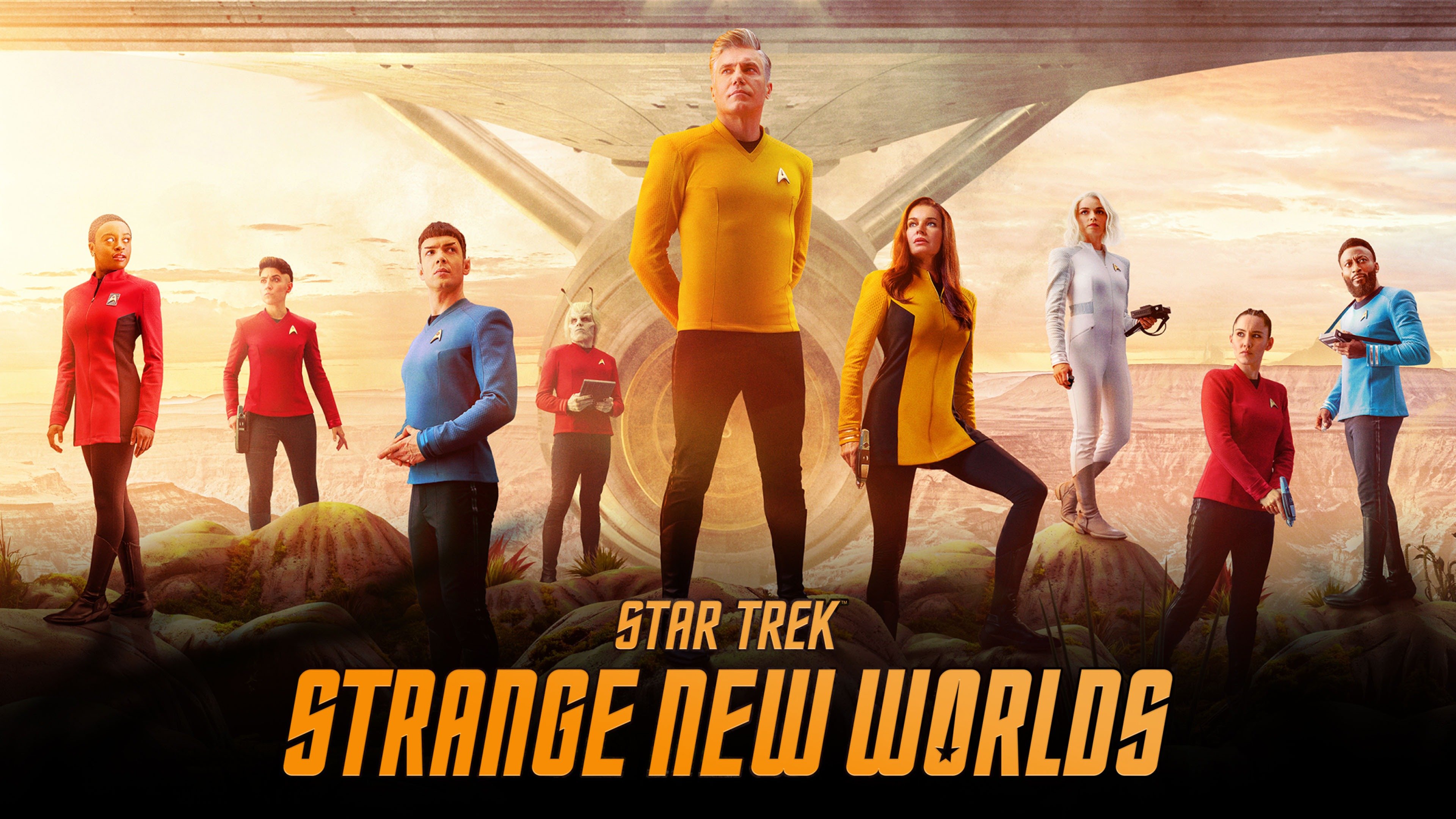
We watched the entire 10-episode run of the latest Star Trek show, “Strange New Worlds,” which finished late last week, and it was OK.
It’s set in the Captain Pike era of the Enterprise, and spends much of its story development spinning variations on familiar Trek TOS episodes. Pike is the captain, and Number One is there (as she was in the first TOS pilot, incorporated into “The Menagerie”), and Spock is there (played by yet another actor, of course), as well as several other familiar characters, including Uhura, Nurse Chapel, and a Dr. M’Benga, a black medic who appeared in exactly two TOS episodes.
Lots to quibble about, beginning with the recurring characters. Except for Spock, and maybe M’Benga, none of the actors — well, Uhura and Chapel — make any attempt to play the familiar characters; they are different people with the same names. No attempt is made to echo any of the designs (uniforms, starships) of the original series. The new show retains all the nonsense physics of spaceships banking, swooshing, and dodging asteroids.
I’d given up watching Trek series and movies decades ago, by 2000 or so, mostly because they became either soap operas involving Klingons, the Borg, the Ferengi, and other recurring baddies; or in the movies became standard action-adventure special effects spectaculars, more Star Wars than original Trek. With a peculiar propensity for destroying the Enterprise. (An example of classic erosion, as I’ve discussed.)
So to give this series credit, it actually had three or four episodes that were independent stories. (Though it ripped off the concept of a famous Ursula K. Le Guin story in one of them, as the interwebs immediately recognized.) It did indulge in couple a season-long story arcs, one involving a blind Andorian-like alien called Hemmer, the other involving M’Benga’s daughter, that both concluded by the last episodes.
But it also had a couple involving the Gorn, the lizard-like aliens we saw once, in “Arena,” and a couple involving T’Pring, the Vulcan woman Spock was betrothed to as we saw once, in “Amok Time.” And finally, the last episode, “A Quality of Mercy,” was an audacious retelling of the famous first-season episode “Balance of Terror,” concerning the Federation’s first glimpse of the Romulans, but with a different captain in charge — until an appearance by a young James T. Kirk (played by, of course, another unfamiliar actor). This episode culminated another running theme in this series: Pike’s precognition of his own fate, as we saw in TOS episode “The Menagerie,” in which he was an unmoving, disfigured occupant of a wheelchair. As much as I rolled my eyes at yet another cribbing from the original series, this episode was extremely clever, and at times moving, in weaving a similar but different storyline from the one we all know, and giving clarity to Pike about alternate versions of his fate.
*
Still. Too derivative of the original series. Cannot anything completely new be done? What actually happened in the decades, even centuries, before the familiar Enterprise with Captain Kirk?
I wrote some notes about a Trek prequel series I would have rather seen:
Imagine an *earlier* pre-Federation era in which not so much of space was known. In this era, humanity isn’t quite sure any other intelligent races are out there; no alien contacts have been made. (No Klingons or Romulans.) How was Vulcan first contacted, and how did aliens like Spock (and others according to SNW) become accepted into the Earth-run Federation? How did human scientists rationalize their existence, given what we know about the contingency of evolution? (Well, Trek wouldn’t bother with that.)
This series would have emphasized that known space was very small, just a few dozen light years out in any direction from Earth. That would make sense of the “five year mission” to expand known space, and would emphasize the shock of encounters with truly unknown worlds and aliens, which was still happening in TOS but has become less and less an idea in all the TV and movie sequels. We would see how humans arranged the “federation,” to oversee the various alien humanoid races discovered (though this has always smacked of human chauvinism, as if humans are running the galaxy, other races given only courtesy roles), and how numerous (human-run) starbases were established.
*
But then I realized, there was a movie called Star Trek: First Contact. Did that cover some of this? And wait wait — there was a *series* called Star Trek Enterprise, which was a prequel to TOS. A brief glance at its Wikipedia page shows it did cover some of these ideas.
I didn’t see that series, which ran from 2001 to 2005, partly because I was by that time pretty much over Trek, and partly because I moved in together with my partner, who was not into science fiction of any sort. Perhaps I should order the Blu-Ray and watch it? Well, maybe; I suspect I wouldn’t be any happier about it than I’ve been with SNW. Before I did that I would resume my close rewatch of TOS, and expand my Trek coverage here on this blog.
*





